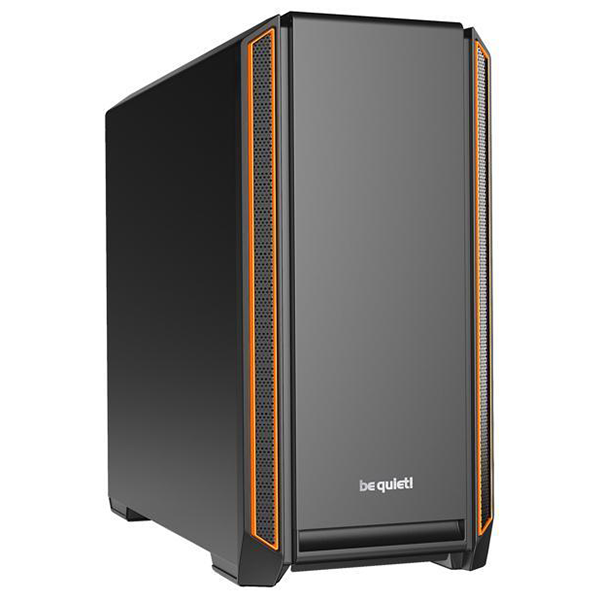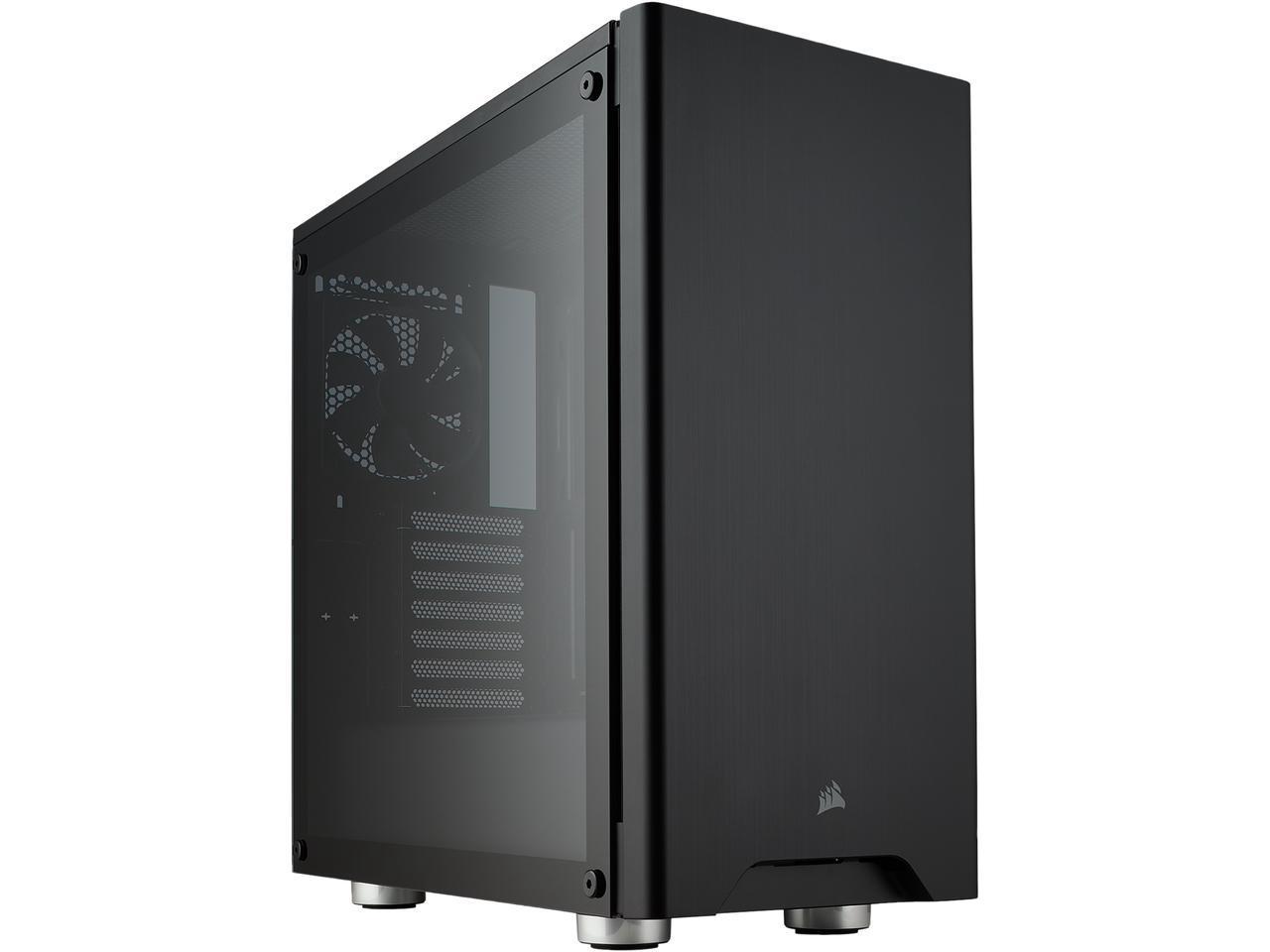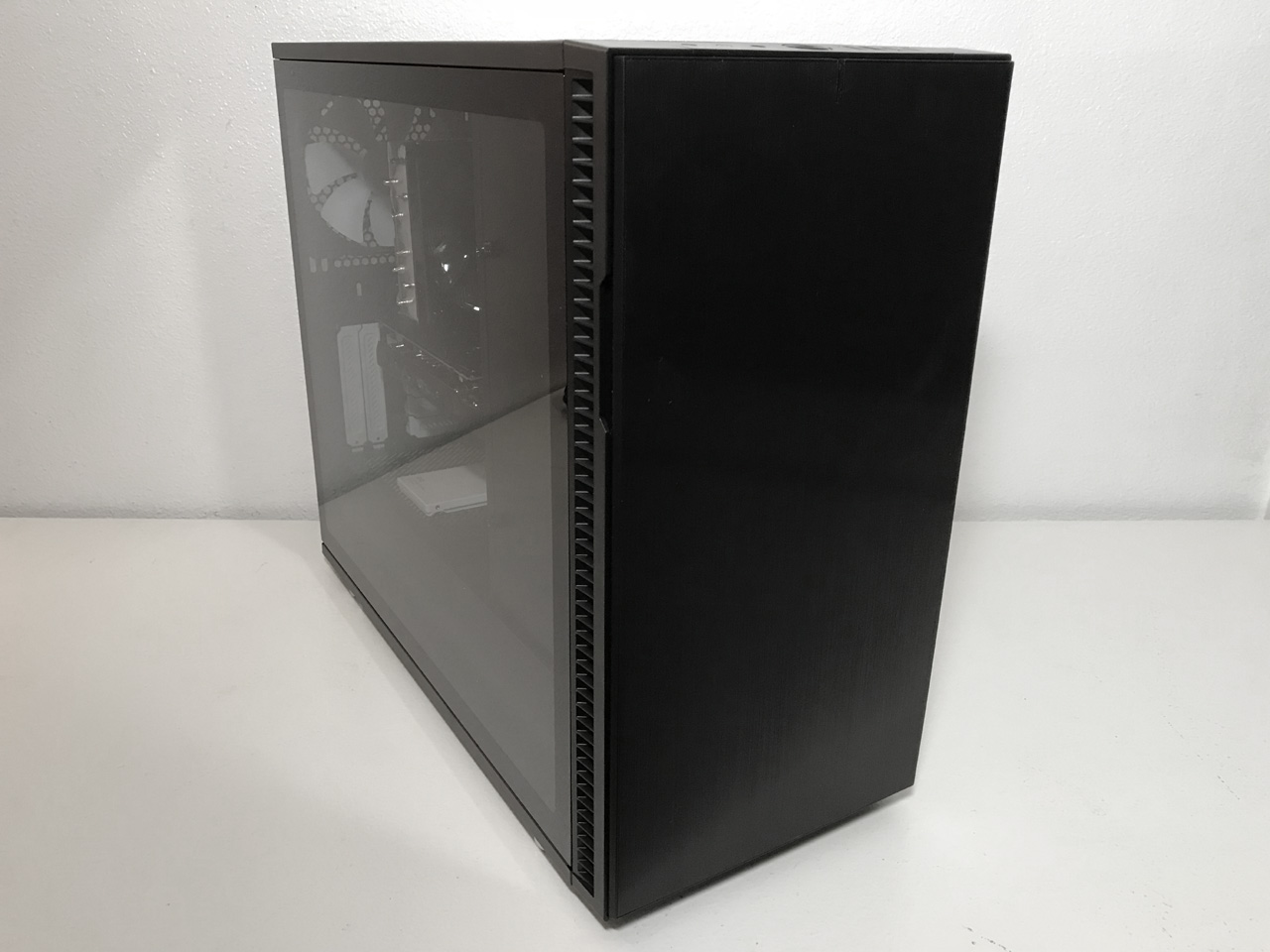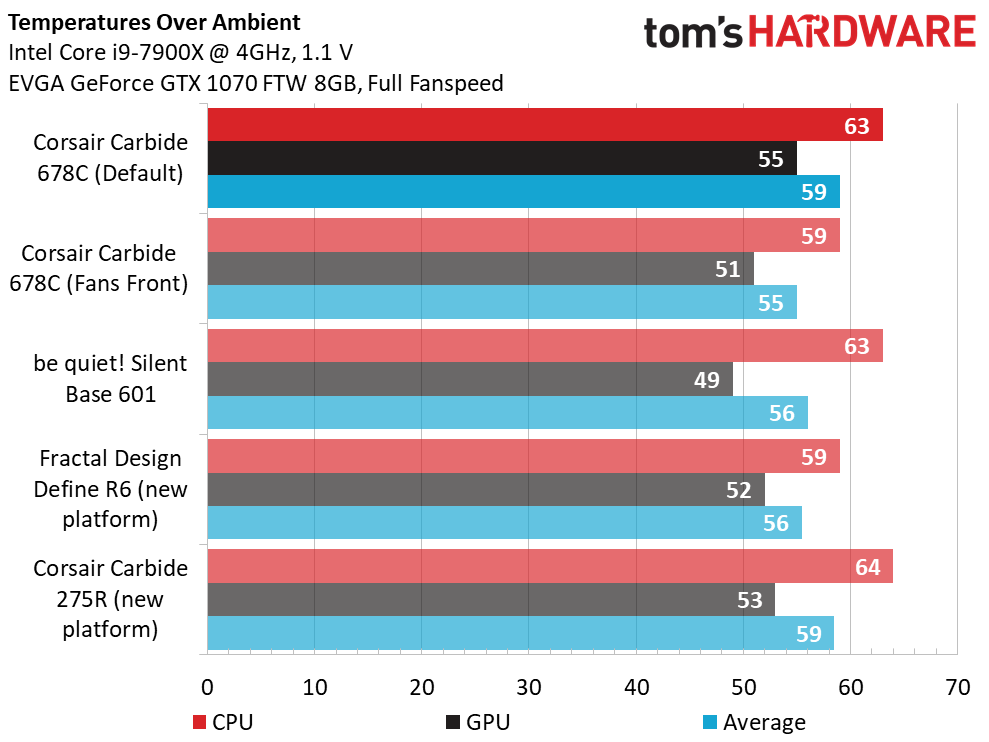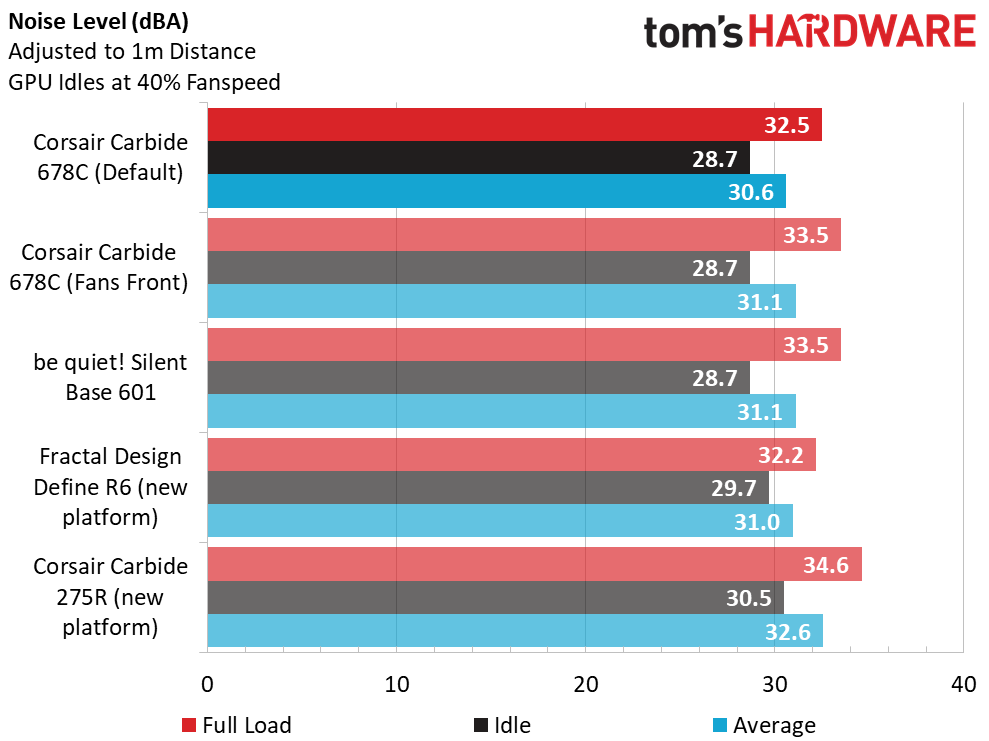Corsair Carbide 678C Review: Old-School Cool
Why you can trust Tom's Hardware
Benchmark Results and Conclusion
Using our Intel Core i9-7900X test platform, we tested the Carbide 678C in two configurations; as shipped (mesh top panel, fans in top, front and rear) and again with the sound-damping vent cover in place and the top intake fan relocated to the front of the chassis. For comparison, we tested against the Fractal Design Define R6, the be quiet! Silent Base 600 and the Corsair's own Carbide 275R to give you a solid idea of where this case stacks up against competitors with similar sizes and feature sets.
The two different configurations are noted the graphs below accordingly.
In stock form, our i9-7900X running at 4GHz hit 63 degrees Celsius over ambient, higher than all the cases we tested against. Rerunning our tests with the two 140mm fans in the front of the case dropped our CPU temps by 4 degrees Celsius, putting the Carbide 678C in a tie for first place with the Fractal Design Define R6.
In the stock configuration, GPU temperatures were also a bit high at 55 degrees Celsius over the ambient room temperature, higher than all the other cases our our comparison group. Once again, we reran our tests with the two 140mm fans in the front of the case, resulting in GPU temps 4 degrees C lower.
We took sound pressure level readings with two off-the-shelf dB meters from two different angles. With the fan speed at 1,200 rpm, our test system in stock form registered just 29.9dBA at idle and 32.1 dBA. When we re-tested the chassis with the sound-damping vent cover in place and two 140mm intake fans, sound levels dipped to 28.8 dBA at idle and 32 dBA under load. These results bested the rest of the cases we used for comparison. Clearly the sound dampening material (and the tempered glass) is doing its job.
Cooling efficiency and noise levels are both ways to measure performance. Determining acoustic efficiency, also referred to as cooling-to-noise ratio, is a matter of averaging all five of our tests to determine a base value.
Bottom Line
Let's face it, at $200 the Corsair Carbide 678C is a bit on the expensive side for a mid-tower ATX chassis. But at least with this case, you get what you pay for. Sure, you could save $80 - $100 by opting for the Silent Base 601 or Corsair's own Carbide 275R. But in doing so, you give up features like a tempered glass side panel (Silent Base 601), sound damping material (275R) and a front USB 3.1 Type C port (both cases). If you need a chassis with an emphasis on silent computing, the Carbide 678C is a solid choice. Those concerned about price should wait for this chassis to go on sale, because we don’t know of any less-expensive competing cases with this particular mix of features and performance.
Get Tom's Hardware's best news and in-depth reviews, straight to your inbox.
MORE: Best Cases
MORE: All Case Content
Current page: Benchmark Results and Conclusion
Prev Page Hardware Installation and Test ConfigurationSteven Lynch is a contributor for Tom’s Hardware, primarily covering case reviews and news.
